
Browse an alphabetical list of photographs. These historical images portray people, places, and events before, during, and after World War II and the Holocaust.
<< Previous | Displaying results 401-450 of 2641 for "Photo" | Next >>
Benjamin Miedzyrzecki (Benjamin Meed), a member of the Jewish underground living in hiding on false papers, poses in Ogrod Saski (Saski Gardens) on the Aryan side of Warsaw. Poland, 1943.
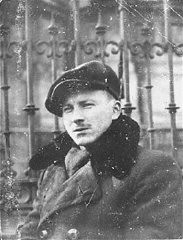
The American Jewish Joint Distribution Committee pharmacy in the displaced persons camp at Bergen-Belsen. Germany, August 14, 1947.

Buildings of the Bergen-Belsen concentration camp are burned to the ground by British soldiers to prevent the spread of typhus. Germany, May 21, 1945.
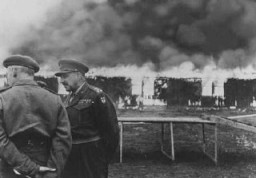
Buildings of the Bergen-Belsen concentration camp is burned to the ground to halt the spread of typhus. Germany, May 21, 1945.
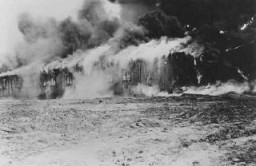
The Berlin Fire Brigade extinguishes the fire at the Reichstag (German parliament). Berlin, Germany, February 27, 1933.
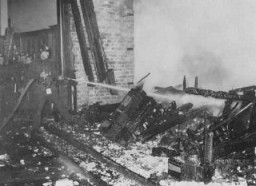
Bernard Druskin in Israel, 1946. Bernard joined the partisans after escaping from the Vilna ghetto in 1940.
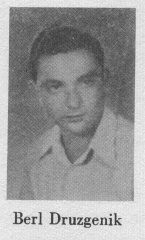
Bert and Anne Bochove, who hid 37 Jews in their pharmacy in Huizen, an Amsterdam suburb, pose here with their children. The two were named Righteous Among the Nations. The Netherlands, 1944 or 1945.
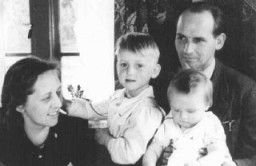
Bertolt Brecht, author of the "Threepenny Opera" and a well-known leftist poet and dramatist, who emigrated from Germany in 1933. In exile, he co-edited an anti-Nazi magazine titled Das Wort. London, Great Britain, 1936.
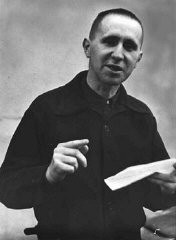
Bertolt Brecht (left), Marxist poet and dramatist, was a staunch opponent of the Nazis. He fled Germany shortly after Hitler's rise to power. Pictured here with his son, Stefan. Germany, 1931.
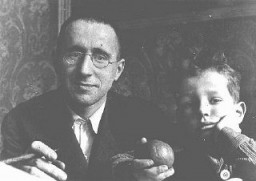
"Between Weedpatch and Lamont, Kern County, California. Children living in camp" by Dorothea Lange, April 20, 1940.
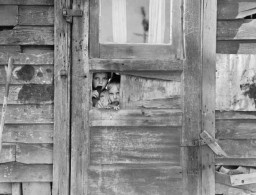
Bialik kindergarten students pose together in the Mariendorf displaced persons (DP) camp, circa 1946–1948. The children hold a banner that reads, "Ch, N. Bialik Kindergarten." A portrait of Theodor Herzl hangs on the back wall. Above the portrait is is a Hebrew banner that reads "Our children, the future of our nation." Benjamin Markowicz is in the fourth row, second from the left.

A billboard advertising an anti-Masonic exhibition organized by the anti-Masonic Belgian league, "L'Epuration," in the Masonic Supreme Council building. Brussels. Belgium, 1941. As part of their propaganda campaign against Freemasonry, the Nazis and other local right-wing organizations mounted anti-Masonic exhibitions throughout occupied Europe. German-occupied Paris hosted an anti-Masonic exhibition in October 1940, as did German-occupied Brussels in February 1941.
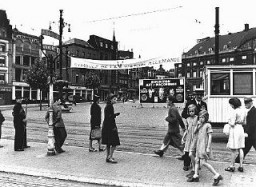
Blanka and Harry in Oregon after they were married. Her husband was an inspector for General Dynamics.

Blanka and Harry with their first and only grandchild, Alexis Danielle.
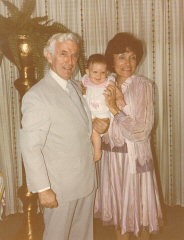
Photograph showing Blanka when she was about 1 year old, ca. 1923. She received this photograph many years later, after she came to America, from her grandmother's half brother.
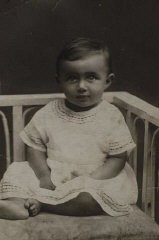
Photograph of Blanka Rothschild taken in 2004. Blanka was an only child in a close-knit family in Lodz, Poland. Her father died in 1937. After the German invasion of Poland, Blanka and her mother remained in Lodz with Blanka's grandmother, who was unable to travel. Along with other relatives, they were forced into the Lodz ghetto in 1940. She and her mother were deported to the Ravensbrueck camp in Germany in 1944. From Ravensbrueck, Blanka and her mother were sent to a subcamp of Sachsenhausen. Blanka…
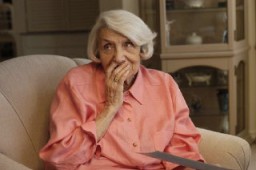
Blanka relaxes with her granddaughter, Alexis Danielle, and a family dog.
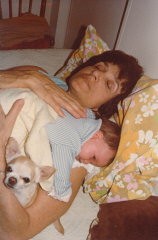
Shelly and Alexis Danielle, Blanka's daughter and granddaughter.
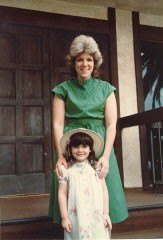
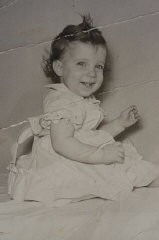
The American Jewish Joint Distribution Committee helped to locate relatives of Blanka's who lived in the United States. Blanka crossed the Atlantic Ocean in the winter on the SS Marine Marlin, a troop transporter. The trip took over two weeks during storms and rough seas. The ship was damaged, and Blanka, along with the other refugees traveling in the lowest quarters, had to walk in water for days. This photograph shows Blanka's embarkation card for the SS Marine Marlin, with a sailing date in January…
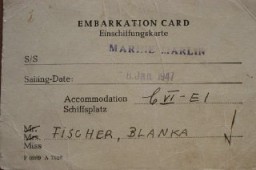
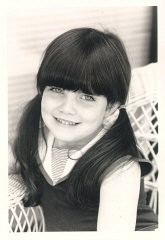
Photograph of Blanka's granddaughter, Alexis Danielle, and her fiancé.
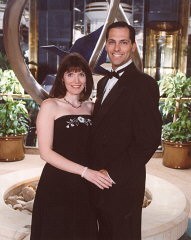
Defendant Paul Blobel at the Einsatzgruppen Trial, case #9 of the Subsequent Nuremberg Proceedings.
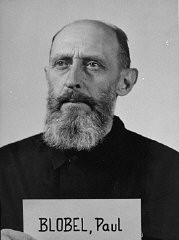
Jewish refugees board the SS Mouzinho for the voyage to the United States. Among these refugees is a group of Jewish children recently rescued from internment camps in France. Lisbon, Portugal, ca. June 10, 1941.
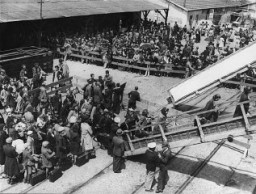
The bodies of former prisoners are piled in the crematorium mortuary in the newly liberated Dachau concentration camp. Dachau, Germany, April 29, 1945. This image is among the commonly reproduced and distributed, and often extremely graphic, images of liberation. These photographs provided powerful documentation of the crimes of the Nazi era.
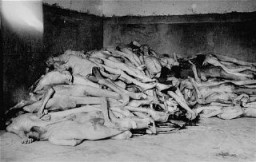
The bodies of SS General Reinhard Heydrich's assassins and five other operatives were displayed in front of the Carlo Boromeo Church (now the St. Cyril and Methodius Church). On May 27, 1942, two Czech parachute agents (Jan Kubis and Josef Gabcik) succeeded in rolling a hand grenade under Heydrich's vehicle. Heydrich later died from his wounds. Kubis and Gabcik went into hiding, joining with five other operatives in the Carlo Boromeo Church in Prague. On June 18, however, Nazi authorities became aware of…
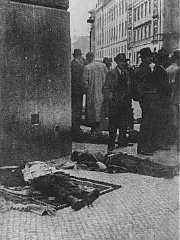
Victims of Ustasa (Croatian fascist) atrocities: the bodies of Jasenovac prisoners floating in the Sava River. Between August 1941 and April 1945.
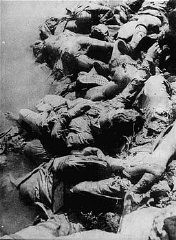
A US Army soldier views the bodies of prisoners piled on top of one another in the doorway of a barracks in Wöbbelin. Germany, May 4–5, 1945.
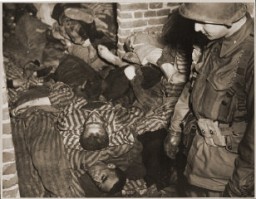
The bodies of prisoners killed in the Nordhausen concentration camp lie in a mass grave dug by German civilians under orders from US troops. Nordhausen, Germany, April 13-14, 1945.

Bodies of Soviet prisoners of war who died in an unidentified camp. Place and date uncertain (after the German invasion of the Soviet Union).
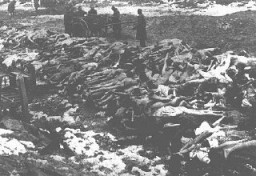
View of the main street of the Nordhausen concentration camp, outside of the central barracks (Boelke Kaserne), where the bodies of prisoners have been laid out in long rows. Nordhausen, Germany, April 13–14, 1945. This image is among the commonly reproduced and distributed, and often extremely graphic, images of liberation. These photographs provided powerful documentation of the crimes of the Nazi era.
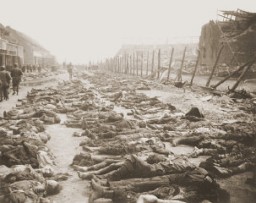
Corpses of victims of the Gunskirchen subcamp of the Mauthausen concentration camp. Austria, after May 5, 1945.
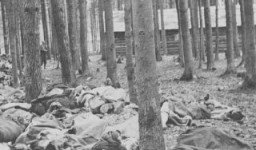
The bodies of former prisoners are stacked outside the crematorium in the newly liberated Buchenwald concentration camp. Buchenwald, Germany, April 23, 1945. This image is among the commonly reproduced and distributed, and often extremely graphic, images of liberation. These photographs provided powerful documentation of the crimes of the Nazi era.
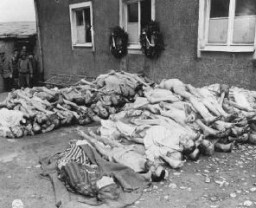
The bodies of former prisoners are piled outside the crematorium at the newly liberated Dachau concentration camp. Dachau, Germany, April–May 1945. This image is among the commonly reproduced and distributed, and often extremely graphic, images of liberation. These photographs provided powerful documentation of the crimes of the Nazi era.
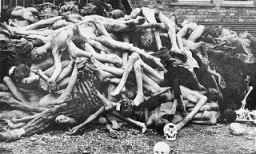
An American medic and soldier stand by the corpse of a prisoner shot on the road near Gardelegen. The prisoner was shot by the SS when he was too exhausted to continue on a death march. Germany, April 14-18, 1945.
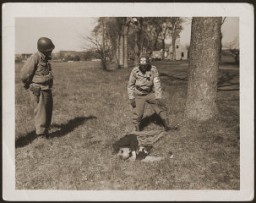
Palestine police remove the body of a refugee (draped in a Jewish flag), killed aboard the refugee ship Theodor Herzl during its unsuccessful attempt to run through a British naval blockade. Haifa port, Palestine, April 14, 1947.
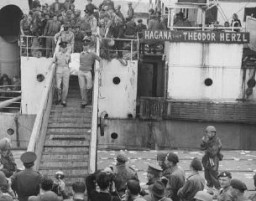
View of the bombed-out city of Nuremberg. Visible in the distance is the twin-spired Lorenz Church, and on the right, a statue of Kaiser Wilhelm I. Nuremberg, Germany, 1945.
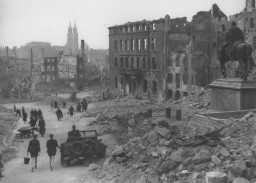
View of Rotterdam after German bombing in May 1940. Rotterdam, the Netherlands, 1940.

Bone-crushing machine used by Sonderkommando 1005 to grind the bones of victims after their bodies were burned in the Janowska camp. August 1944.
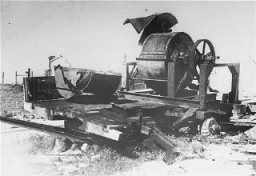
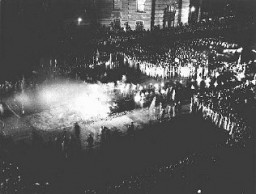
Crowds gather at Berlin's Opernplatz (opera square) for the burning of books deemed "un-German." Berlin, Germany, May 10, 1933.
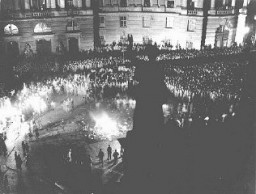
Books and writings deemed "un-German" are burned at the Opernplatz (Opera Square). Berlin, Germany, May 10, 1933.
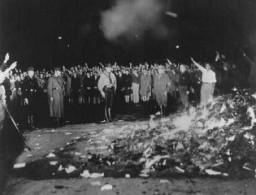
At Berlin's Opernplatz (Opera Square), an SA man throws books into the flames at the public burning of books deemed "un-German." This image is a still from a motion picture. Berlin, Germany, May 10, 1933.
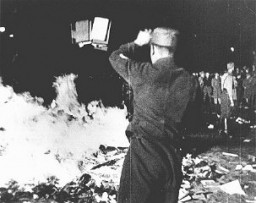
At Berlin's Opernplatz, the burning of books and other printed materials considered "un-German" by members of the SA and students from universities and colleges in Berlin. Germany, May 10, 1933.

At Berlin's Opernplatz, crowds of German students and members of the SA gather for the burning of books deemed "un-German." Berlin, Germany, May 10, 1933.
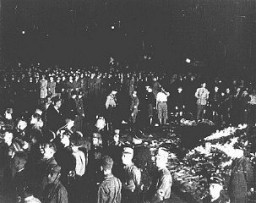
US soldiers discovered these boxcars loaded with dead prisoners outside the Dachau camp. Here, they force German boys—believed to be members of the Hitler Youth (Hitlerjugend; HJ)—to view the atrocity. Dachau, Germany, April 30, 1945.
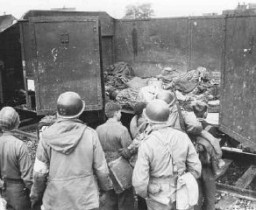
Members of the Storm Troopers (SA), with boycott signs, block the entrance to a Jewish-owned shop. One of the signs exhorts: "Germans! Defend yourselves! Don't buy from Jews!" Berlin, Germany, April 1, 1933.
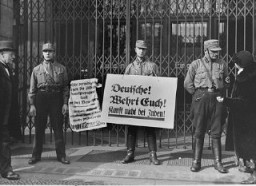
Scene during the boycott of Jewish businesses. A sign on truck carrying Storm Troopers (SA) urges "Germans! Defend yourselves. Don't buy from Jews." Berlin, Germany, April 1, 1933.
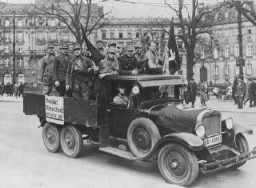
Defendant Karl Brandt testifies during the Doctors Trial. Nuremberg, Germany, December 9, 1946-August 20, 1947.
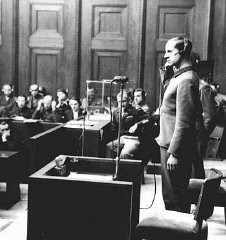
This photo of a Depression-era bread line was taken by Dorothea Lange at the White Angel Jungl...
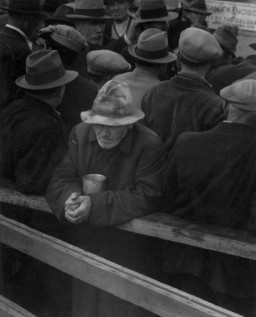
We would like to thank Crown Family Philanthropies, Abe and Ida Cooper Foundation, the Claims Conference, EVZ, and BMF for supporting the ongoing work to create content and resources for the Holocaust Encyclopedia. View the list of donor acknowledgement.